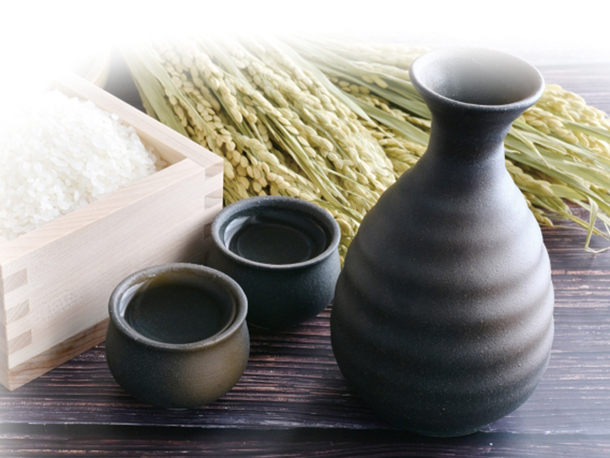
Fermentation method that is rare in the world
Sake is a brewed liquor made from rice. Brewed liquor is made by alcohol fermentation using grains and fruits as raw materials. Since there are no distillation processes, the flavor of the raw materials themselves is directly reflected. Alcoholic beverages that are classified as brewed liquor like sake include wine and beer, but the fermentation methods for each are different. In the case of wine, the raw material, grapes, contains sugar, so it can be fermented as is. On the other hand, sake and beer require work to convert the starch in the raw grains into sugar. This work is called saccharification. In the case of beer, the saccharification and fermentation processes are carried out separately, but in the case of sake, saccharification and fermentation are carried out simultaneously in the same tank. This fermentation method is called parallel multiple fermentation, and brewed liquor made by parallel multiple fermentation is rare in the world.

Until sake is made
Sake is made using parallel multiple fermentation, which is rare in the world, and is completed through a series of complex processes. Each step affects the finished product, resulting in a delicate and deep flavor, which is the unique character of each sake. The taste of sake cannot be described as sweet or spicy; it has a complex intertwining of sourness, bitterness, and astringency, and is truly profound, which is what makes sake so interesting.

How to choose sake
When choosing sake, the sake level and acidity level listed on the bottle serves as a reference for the taste. Sake level is the standard for determining whether it is sweet or spicy, and acidity level is the standard for determining whether it is spicy and rich or sweet and light.
Classification of Japanese sake
According to the Liquor Tax Law, sake is divided into two types: specific name sake and regular sake. In order to be called a specific name sake, the ratio of koji rice used must be 15% or more, and the rice used as raw material must be grade 3 or higher according to the Agricultural Products Inspection Act, or rice equivalent to that. Specific name sake is divided into three types: Junmaishu Honjozoshu and Ginjoshu.

1,164 sake breweries
According to National Tax Agency statistics in 2021, there are 1,164 sake breweries in Japan.

Asabiraki
Brewed using the traditional cold brewing method of the southern style, the original flavor of the rice is clearly expressed. A spicy Junmaishu with a delicious taste.
- Junmaishu
- Iwate
- sake level+5

Ginreigasan
Clear throat and elegant umami. Honjozoshu brewed in extremely cold weather.
- Honjozoshu
- Yamagata
- sake level±0

Hakuryuu
Junmaiginjoshu brewed by Echigo Kurodo. It has a calm aroma and a rich taste. A sake with a sharp spiciness.
- Junmaiginjoshu
- Niigata
- sake level+3

Chichibunishiki
This is a special Honjozoshu that is dry and allows you to fully enjoy the original sharpness of sake.
- Special Honjozoshu
- Saitama
- sake level+5

Maboroshinotaki
We use water that has been selected as one of the top 100 famous waters for brewing. A dry Ginjoshu with a harmonious refreshing umami.
- Ginjoshu
- Toyama
- sake level+4

Fukumasamune
Junmaishu with the rich umami of rice. It has a rich umami but a smooth aftertaste.
- Junmaishu
- Ishikawa
- sake level+2

Sakuramasamune
Daiginjoshu brewed by polishing 50% Yamada Nishiki rice from Hyogo Prefecture. The beautiful sweetness of polished rice and the gorgeous fragrance are in harmony.
- Daiginjoshu
- Hyogo
- sake level+2

Kinryo
It has a gentle, plump aroma and richness, while the sweet and pleasant acidity leaves a refreshing sensation on the throat.
- Special Junmaish
- Kagawa
- sake level+3.5

